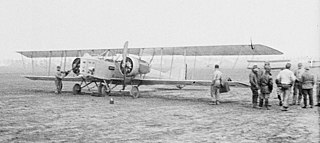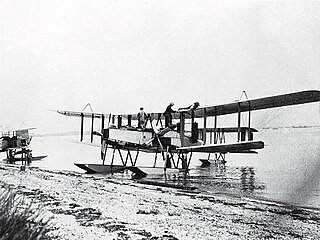Related Research Articles

The Morane-Saulnier Type P was a French parasol wing two-seat reconnaissance aeroplane of the First World War. Morane-Saulnier built 595 for the French air force, and it was also used by the British until 1916-17.

The Morane-Saulnier M.S.225 was a French fighter aircraft of the 1930s. It was produced in limited quantities to be used as a transitional aircraft between the last of the biplanes and the first monoplane fighters.

The Blériot 127 was a monoplane bomber aircraft developed and produced by the French aircraft manufacturer Blériot.

The Morane-Borel monoplane was an early French single-engine, single-seat aircraft. It was flown in several European air races.

The Salmson-Moineau S.M.1 A3,, was a French armed three-seat biplane long range reconnaissance aircraft of the First World War designed by René Moineau for the Salmson company.

The Letord Let.5 was probably the most numerous of a family of 3-seat reconnaissance bombers, designed and built in France from 1916, originally to an A3 specification from the STAé.

The Farman NC.470 was a French twin-engined floatplane designed as a crew trainer for the French Navy. It was used in small numbers for both its intended role as a trainer and as a coastal reconnaissance aircraft at the start of World War II.

The Morane-Saulnier T was a French biplane reconnaissance aircraft in 1916 and produced in small numbers during World War I.

The Zeppelin-Staaken Riesenflugzeuge were a series of very large bomber aircraft - Riesenflugzeuge, usually powered by four or more engines, designed and built in Germany from 1915 to 1919.

The Blackburn G.P seaplane,, was a British twin-engine reconnaissance torpedo floatplane of the First World War, built by the Blackburn Aeroplane and Motor Co Ltd.

The Morane-Saulnier MS.341 was a single engine parasol wing training and touring aircraft built in France in the mid-1930s. It had two open cockpits in tandem and was sold to private owners, clubs and the Armée de l'Air.
The Morane-Saulnier MS.300 and MS.301 were French parasol wing introductory trainer aircraft, first flown in 1930. They differed only in engine type. Neither reached production but were developed into two similar trainers, the MS.230 and MS.315, which were made in large numbers.
The Morane-Saulnier MS.152 was a French multi-purpose aircraft built in 1928. It did not go into production.

The Morane-Saulnier MS.221 was a French fighter aircraft, built in 1928 to compete for a government contract in the "Jockey" programme. Two were built, one of which was progressively modified to increase its speed, but in 1930 the light fighter concept was abandoned.

The Blériot Bl.71 BN.3 was a large First World War French heavy biplane night bomber designed and built by Blériot to the BN.3 three-seat night bomber specification. Only a single prototype was built, which was damaged beyond repair on 15 May 1918.

The Blériot Bl.73, Bl.74, Bl.75 and Bl.76 were large First World War French biplanes designed and built by Blériot. The Bl.73 was built to the BN.3 three-seat night bomber specification, the Bl.74 was to be a bomber-transport, the Bl.75 Aerobus was to be an airliner, while the unbuilt Bl.76 was intended for the BN.4 four-seat night bomber specification. Aside from the Bl.76, just one prototype was built of each type, with both Bl.73 and Bl.74 prototypes being lost in accidents while on test flights.
The SPAD S.XV was a single-seat fighter designed and built in France and offered to fulfil a 1918 C1 specification.
The Henri Farman HF.35 was a large 3-seat biplane designed and built in France by Henri Farman during 1915.
The Caproni Ca.66 and Caproni Ca.67 were Italian night bomber aircraft designed to re-equip the post-World War I Regia Aeronautica.

The Morane-Saulnier MS.224 was a prototype fighter plane built by Morane-Saulnier in the early 1930s.
References
- 1 2 3 Davilla, Dr. James J.; Soltan, Arthur M. (January 2002). French aircraft of the First World War. Flying Machines Press. pp. 329–330. ISBN 1891268090.
- ↑ Parmentier, Bruno (11 November 2008). "Morane-Saulnier TRK" (in French). Aviafrance.com. Retrieved 6 February 2019.